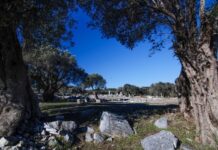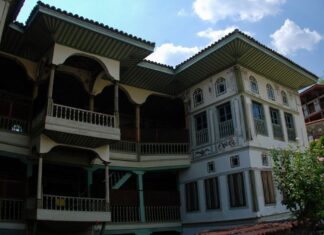Tarasius, the new Patriarch of Constantinople and a supporter of images, succeeded, after overcoming much difficulty, and especially distrust in Rome and the East, after also removing the excited army, in bringing together a General Council of about 350 bishops at Nicaea, A.D. 787, which reversed the decrees of A.D. 754. The proceedings of the seven sittings are of great value, because very important patristic passages have been preserved in them which otherwise would have perished; for at this synod also the discussions turned chiefly on the Fathers. The decision (oros) restored orthodoxy and finally settled it.
I cannot do better than to cite in conclusion the words of the profoundly learned [Anglican!] Archbishop of Dublin, himself a quasi-Iconoclast.
(Trench. Lect. Medieval Ch. Hist., p. 93.)
Disclaimed with indignation
It is only fair to state that the most zealous favourers and promoters of this ill-directed homage always disclaimed with indignation the charge of offering to the images any reverence which did not differ in kind, and not merely in degree, from the worship which they offered to Almighty God, designating it as they did by altogether a different name.
We shall very probably feel that in these distinctions which they drew between the one and the other, between the “honour” which they gave to these icons and the “worship” which they withheld from these and gave only to God, there lay no slightest justification of that in which they allowed themselves; but these distinctions acquit them of idolatry, and it is the merest justice to remember this.
(Trench. Ut supra, p. 99.)
I can close this Lecture with no better or wiser words than those with which Dean Milman reads to us the lesson of this mournful story: “There was this irremediable weakness in the cause of iconoclasm; it was a mere negative doctrine, a proscription of those sentiments which had full possession of the popular mind, without any strong countervailing excitement. The senses were robbed of their habitual and cherished objects of devotion, but there was no awakening of an inner life of intense and passionate piety.
The cold, naked walls from whence the Scriptural histories had been effaced, the despoiled shrines, the mutilated images, could not compel the mind to a more pure and immaterial conception of God and the Saviour. Hatred of images, in the process of the strife, might become, as it did, a fanaticism, it could never become a religion. Iconoclasm might proscribe idolatry; but it had no power of kindling a purer faith.”
Read More about Apologia of St John Damascene Against those who Decry Holy Images Part 52








